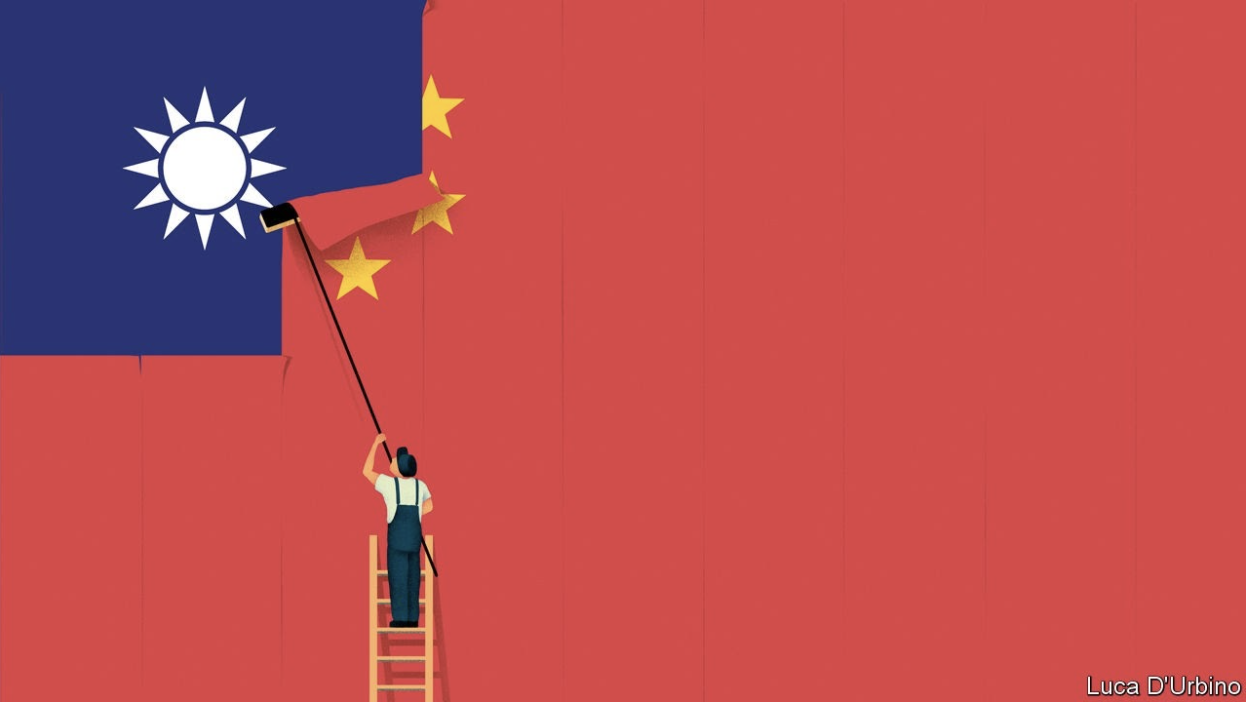
SZE WANG – 27TH OCTOBER 2020
EDITOR: LUCIA DARDIS
We live in a time where politicians and entire governments group themselves based on their stance on Chinese trade. Emerging markets have welcomed China’s economic cooperation, while more protectionist countries such as the US seem to be distancing themselves further and further away. Most are stuck trying to find a compromise in the rapidly widening gulf between the world’s two superpowers. Over the past 70 years, the evolution of Taiwan’s intricate relationship with China has shown a combination of all three trends—cooperation, decoupling, and compromise.
The Post-War Period
In 1949, the Chinese Civil War ended with the retreat of the Kuomintang (KMT) to the island of Taiwan. Both Taipei and Beijing claimed to be the only legitimate government of China, and what ensued was four long decades of “unremitting hostility.” Cross-strait relations were essentially non-existent during this time.
Before the war, Taiwan was an importer of manufactured goods and an exporter of primary products, mainly sugar and rice. By the 1970s, Taiwan had reversed the situation, transforming into a major exporter of textiles, electronics, and other manufactured products. This export-driven growth miraculously turned the insignificant island economy into one of the biggest markets in Asia. In 1974, Taiwan’s population was only 16 million, but its import numbers were 40% greater than India’s (population of 596 million), and 80% greater than Indonesia’s (population of 128 million).
This rapid economic expansion was accompanied by diplomatic and international isolation. President Chiang-kai Shek adhered to a “One China” principle: Taiwan would break off relations with any country that established ties with Mainland China. This led to a shrinking number of international allies, and in 1971, the United Nations voted to declare the People’s Republic of China (PRC) as the rightful representative of China. The ROC (Taiwan) government was subsequently expelled.
Hesitant Rapprochement and Pragmatic Diplomacy
In the 1980s, Taiwan-China contact grew as a new generation of Taiwanese leaders sought to enhance Taiwan’s international status while stabilizing relations with China. Politicians began developing the argument that since Taiwan was already independent, there was no need to provoke China by officially declaring independence. This new perspective paved the way for the next two decades of “strategic ambiguity.” During this time, policy-makers emphasized domestic issues appealing to Taiwanese nationalism, while publicly assuring that Taiwan would not challenge the cross-strait status quo. Taiwan’s China policy had shifted from an era of outright confrontation, to one of cautious and calculated compromise. Building on this new relationship, Taiwan relaxed restrictions on cross-strait economic interactions, setting off an explosion of Taiwanese entrepreneurs entering China, known as the Taishang (“Taiwanese businessman”).
Emergence of the Taishang
Taishang first emerged in the late 1980s and increased steadily through the 1990s. The democratization of Taiwan had led to stricter environmental and labor regulations, contributing to rising production costs. Taiwanese manufacturers saw Mainland China, with its cheap labor and lax regulations, as a better alternative. In 1989, the Tiananmen Square Massacre resulted in foreign investors pulling out of China, which created a window of opportunity for Taishang to enter and fill the void. They brought with them global connections, business know-how, and 30+ years of experience as a global manufacturing hub.
In the early 1990s, as the growth of Taiwanese investment to Mainland China greatly outpaced investment in Southeast Asia, the government introduced a series of “Go South” policies. These aimed to prevent excessive economic integration between Taiwan and Mainland China, instead encouraging firms to relocate to Southeast Asia. Though initially successful, the “Go South” policies were in the end ineffective. Businesses were reluctant to leave the cheap, close, and culturally-familiar investment climate of China.
Consequently, cross-strait investment continued to grow at a fast rate. Local Chinese government officials, eager to attract the employment, economic growth, and tax revenue created by Taishang investment, introduced a plethora of incentives and concessions for Taiwanese businesses. Entire manufacturing supply chains had already moved en-masse to the mainland, and now technology-intensive industry also began entering on a large scale. From 1987 to 2008, Taishang brought more than $166 billion USD in investment, and from 1998 to 2008, Taishang were responsible for 14% of China’s foreign trade.
Closer Ties, Economic Integration, and a New “Taiwanese” Identity
In 2008, president Ma Ying-jheo took office with the intention of creating a more cooperative relationship with the mainland. Ma further liberalized cross-strait relations, and signed more than twenty economic and technical agreements. Most notable was the Economic Cooperation Framework Agreement (ECFA), a preferential trade agreement between Taiwan and China.
From 2009 to 2015, Taiwanese investment in China grew from $7 billion, to nearly $11 billion USD. Improved China relations also made further economic interaction between Taiwan and Southeast Asia possible, something Ma’s China-wary predecessors had failed to achieve. ASTEP, a free trade agreement between Singapore and Taiwan, was signed without objection from Beijing because the ECFA had already been agreed. However, rising tensions in the South China Sea undermined Beijing’s credibility in the region, and a potential triangular relationship between Taiwan, Southeast Asia, and China instead tilted towards a Taiwan-China partnership. At the time, Taiwan’s economic integration into the mainland seemed inevitable and irreversible.
Unfortunately for him, Ma’s China-friendly policies coincided with the consolidation of Taiwanese national identity. People now viewed themselves as uniquely “Taiwanese,” as opposed to “Chinese.” Combined with concerns over inequality and job losses, this led to widespread unease about Taiwan’s increasing economic dependence on the mainland.
At the same time, Taishang were beginning to lose their once-favorable position. As more and more foreign manufacturers swarmed into China, Taiwanese businesses faced reduced profits due to the rollback of government incentives and the rising price of land and facilities. The advantages Taishang held over Chinese firms in global connections and business know-how were also quickly eroding. Taishang had fallen from a dominant role to an increasingly marginalized one.
A New Cold War
In 2016, presidential candidate Tsai-Ing Wen rode a wave of democracy support and anti-China sentiment to a landslide win. Tsai’s victory brought Taiwan-China relations to their lowest point since the Cold War. Days after the election, China’s People’s Liberation Army held televised military drills in the coastal city of Xiamen, only 10 km away from the Taiwanese outpost of Quemoy. To punish Tsai’s pro-independence leanings, China also began actively reducing group tours to Taiwan in an attempt to cripple its important tourism industry. This renewed hostility fueled worries of further economic retribution, spurring Taiwanese policy-makers to accelerate Taiwan’s decoupling from the mainland.
President Tsai launched her New Southbound Policy (NSP) in late 2016, which, similar to previous “Go South” policies, aims to enhance ties with countries in Australasia and Southeast Asia. After the US-China trade war began in 2018, Taiwan also offered a three-year incentive plan for Taiwanese companies to move back across the strait. In November 2019, the UN Conference on Trade and Development listed Taiwan as the biggest beneficiary of the US-China trade war, after experiencing an increase of $4.2 billion in exports to the US in the first half of 2019.
These measures have made a marked impact on the structure of Taiwanese trade. Last year, outbound investment to NSP countries grew by 16%, while investment to China fell by 51%. In addition, despite China’s efforts, Taiwan’s tourist numbers have continued to grow. In 2019, the number of foreign visitors hit an all-time high, thanks in large part to an increase of 2.7 million visitors from NSP countries.
Looking to the future
Taiwan’s current situation demonstrates China’s willingness to use economic and military tools to advance political objectives. As a result, a major concern for potential trade partners are the implications that Taiwanese economic cooperation could have on Chinese relations. As the Chinese economy grows in size and influence, the question remains if, like the “Go South” policies of the 1990s, Taiwan’s trajectory of expanding away from the mainland will prove ultimately unsustainable. It will be intriguing to watch whether the small, isolated East Asian economy will be able to step out of China’s shadow in an increasingly China-centric world.
Featured Image Source: The Economist
Disclaimer: The views published in this journal are those of the individual authors or speakers and do not necessarily reflect the position or policy of Berkeley Economic Review staff, the Undergraduate Economics Association, the UC Berkeley Economics Department and faculty, or the University of California, Berkeley in general.



